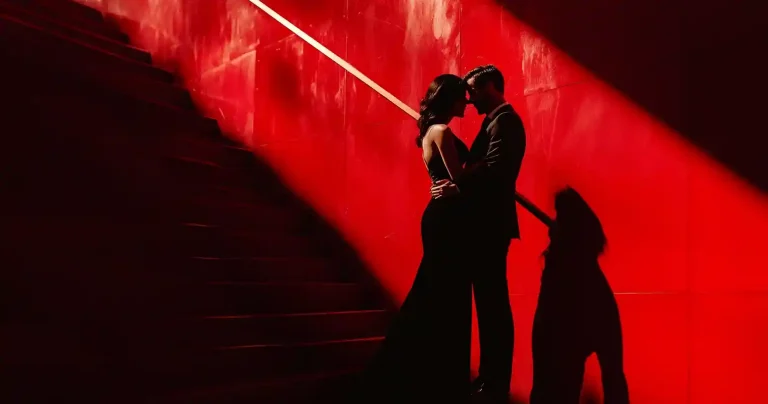You’ve done it. You’ve written your book. Congrats! You’ve joined the ranks of legendary authors like J.K. Rowling and Stephen King. But even the greatest books don’t sell themselves—especially when you’re an indie author hustling to get noticed.
Cue the book marketing plan. It’s your road map to literary fame—or at least to a few loyal readers and some sales that can pay for your coffee habit.
Here’s how to create one that works.
Step 1: Define Your Brand and Audience
Crafting Your Author Brand: Who Are You To Readers?
Let’s start with the basics. What’s your vibe? Are you the mysterious thriller writer? The bubbly romance novelist? Or the quirky sci-fi geek who name-drops Spock at every opportunity?
Your brand should scream YOU. Think of Neil Gaiman. You don’t need his cool leather jacket, but his mysterious, dark vibe? Iconic. Define your style, tone, and message. Make it stick.
And whatever you do, stay consistent. If you’re all warm and friendly on Instagram, don’t suddenly turn into a moody, Kafka-loving recluse on Twitter. Readers will notice—and not in a good way.
Identifying Your Target Audience: Finding Your Book’s BFFs
Now, let’s talk readers. Who’s going to love your book? Your mom doesn’t count (even though she’ll buy 10 copies).
Think about age, interests, and where your audience hangs out online. Are they scrolling TikTok at 2 a.m.? Or lurking on Goodreads, writing snarky reviews?
Pro tip: create reader personas. These are imaginary profiles of your ideal fans. Give them names. “Bookish Brenda” loves enemies-to-lovers romance and never skips a BookTok trend. Market to her.
Step 2: Build Your Online Presence
Your Author Website Is Your Digital Home Base
Your books deserve a home base. That’s where an author platform comes in. And no, a Facebook page from 2008 doesn’t count.
Start with a professional author website. This is your HQ. Add an author bio, book links, and maybe a blog. Got writer’s block? Share behind-the-scenes content. Readers love it.
Next, pick your social media poison. Instagram is perfect for pretty book covers. Twitter (now X?) is great for banter. And TikTok? That’s where books can go viral faster than your favorite cat meme. Looking at you, Colleen Hoover—turning emotional chaos into a viral marketing strategy like a pro.
Leverage Social Media: Choose Your Platforms Wisely
Your readers want more than just “buy my book” posts. (Spoiler: they’ll scroll right past that.) Instead, give them value or at least entertainment. Share the emotional rollercoaster of writing, the inspiration behind your book, your struggles and triumphs as a writer, relatable memes, or a sneak peek of your next project.
Start a blog if you’re feeling ambitious. Or try multimedia content. Podcast interviews, book trailers, or even a YouTube series can work wonders.
Bonus points if you can go full “Brandon Sanderson” and casually announce five surprise novels. Just saying.
Step 3: Use Email Marketing to Grow Your Readerbase
Start with Freebies Readers Can’t Resist
Email marketing sounds fancy, but let’s break it down. It’s just chatting with your readers—directly, without a social media algorithm deciding if your message gets seen. It’s like texting, but for book nerds.
Start with an email list. “But I don’t have one,” you cry. Relax. You can build one. Offer readers something irresistible, like a free short story, exclusive chapter, or even a virtual hug. People love free stuff—just ask anyone who’s ever clicked “subscribe” for a free ebook.
Keep Emails Fun, Personal, and Clickable
Now, about the emails. Keep them short, sweet, and personal. Don’t be that spammy, “Dear valued subscriber” robot. You’re not pitching car insurance. You’re an author! Channel your inner Neil Gaiman or Margaret Atwood—write with heart, humor, and a dash of mystery.
Pro tip: Use subject lines that pop. “Guess What? My Character Just Killed Someone” will get way more clicks than “New Update From [Insert Author Name].”
Step 4: Gain Credibility with Reviews and Influencers
Turn Stars into Sales
Book reviews are gold. They’re proof that real humans (not just your mom) read and loved your book. Or at least liked it enough to write “It was good, I guess” on Amazon.
Step one: get those reviews. Ask early readers, friends, or anyone who’s ever borrowed a pen from you to leave honest feedback. Don’t beg or bribe, though—this isn’t high school prom campaigning.
Pro Tip From a Million-Book-Selling-Author I Worked With
Here’s a tip I learned while working with multi-million-book-selling epic fantasy author James Maxwell: start early.
Use NetGalley to get your book into the hands of eager reviewers before it even launches. These reviewers will read it, love it (hopefully), and post reviews on platforms like Goodreads and even Amazon once your book is live.
NetGalley syncs with Amazon. So, when your book hits the shelves, you can send a polite email blast to everyone you know has read it and ask them to share their review on Amazon. They don’t even have to buy the book—they’ve already read it thanks to NetGalley.
And don’t forget Goodreads. While Amazon won’t allow reviews until your book is live, Goodreads is a different story. You can list your book there ahead of time and start collecting those sweet, early reviews. It’s like building buzz at a party before the DJ even shows up.
Remember to follow up with your NetGalley and Goodreads reviewers after launch. A friendly reminder goes a long way to getting those reviews on Amazon, too.
Collaborate with Influencers: Your Book’s Fairy Godparents
Reach out to book bloggers and influencers. They love reviewing books, and their followers trust them. Think of them as the Oprah of niche genres. “You get a review! And you get a review!”
Once you’ve got reviews from notable influencers or recognized authors, flaunt them like they’re your Goodreads Oscars. Add them to your website, sprinkle them into social media posts, or slap a five-star quote on your book cover. Everyone loves a book that “blew my mind” or “changed my life forever.”
Step 5: Create Buzz with Social Media Campaigns and Events
Get Readers Talking About Your Book
Social media isn’t just for endless dog videos and conspiracy theories. It’s your playground for connecting with readers. And you don’t need to be everywhere—just where your readers are.
Start with one or two platforms. Instagram is perfect for bookish aesthetics. Post your cover, shelfies (selfies + bookshelves), or a picture of your cat snoozing on your manuscript. Bonus points if the cat’s name is Hemingway.
TikTok? Welcome to #BookTok, where authors like Colleen Hoover dominate the dance floor. You don’t need killer moves, though. Share writing hacks, emotional moments, or that time you spilled coffee on your laptop. Relatable wins.
And don’t just post—engage. Reply to comments, join trends, and slide into DMs (appropriately). The goal? Build a community. Think of it as a book club, but cooler.
Hosting Virtual Events: Party Like It’s Online
Virtual events are your chance to shine. And no, you don’t need a million-dollar setup. Just a good internet connection and a plan.
Host a live reading. Share your favorite chapter and the inspiration behind it. Think of it as your Adele moment. Your readers? The screaming fans in the front row.
Or go for a Q&A session. Let your fans ask anything—about your book, your writing process, or even which Hogwarts house you’d be sorted into. (Spoiler: you’re Gryffindor, obviously.)
Want to take it up a notch? Team up with other authors. A panel discussion or co-hosted event can draw a bigger crowd. Plus, it’s less scary when you’re not alone. Strength in numbers, right?
Step 6: Boost Visibility with Paid Advertising
Let’s talk ads for authors. Yes, they cost money, but they also work—if you’re smart about it.
Amazon ads are a great starting point. Why? Because readers are already there, scrolling for their next page-turner. Target by genre, keywords, or even “books similar to [insert bestseller here].” Just don’t try to outbid Stephen King. That man owns horror.
Facebook ads are another powerhouse. They’re perfect for reaching niche groups—like die-hard sci-fi fans or cozy mystery lovers. Keep your visuals catchy and your text simple. “You’ll Love This If You Like [Popular Author]” works like magic.
And remember, ads aren’t “set it and forget it.” Check your stats. Adjust. Rinse and repeat. Treat it like a science experiment. But with fewer explosions. Hopefully.
Step 7: Network with the Writing Community
Join Writing Groups That Matter
Writing might feel like a solo gig, but marketing? It’s a team sport. And the best way to win? Join the writing community.
First, find your people. Writing groups, forums, and Facebook communities are great places to start. Think of them as Hogwarts houses, but for writers. Are you a Slytherin plotting book marketing domination? Or a Hufflepuff cheering everyone on?
Once you’re in, be helpful. Offer feedback, share resources, and celebrate others’ wins. No one likes the person who’s only there to scream, “BUY MY BOOK!” Networking is about relationships. Think Taylor Swift-level connections, not spammy infomercials.
And don’t stop at virtual groups. Attend webinars, workshops, and conferences. They’re goldmines for meeting other authors, agents, and publishers. Bonus: you’ll sound fancy when you casually drop, “I was chatting with [famous author] at that conference last week.”
For a next-level experience, consider a writer’s retreat like our very own WriteTreat. It’s the perfect hybrid of online collaboration culminating in a one-week in-person retreat, designed to inspire, empower, and connect writers. Picture this: learning alongside talented peers, brainstorming ideas, and walking away with actionable steps for your book—all while immersed in a supportive, creative environment on a stunning 15-acre luxury estate in the South of France.
Collaborating with Fellow Writers: Team Up for Success
Let’s talk influencers. They’re like modern-day fairy godparents for your book. Except instead of a magic wand, they have a TikTok account and thousands of followers.
Step one: find the right fit. Look for influencers who love your genre. A horror vlogger probably isn’t hyped to review your cozy romance. Check their vibe. Do they seem authentic? Do their followers engage?
Step two: pitch them. Keep it short, sweet, and personal. Mention why you think they’d love your book. Maybe it’s their favorite trope or the twisty plot they always rave about. Flattery never hurts, but keep it real. No one likes a suck-up.
If they agree, let them work their magic. A single TikTok or Instagram reel can send your book soaring. Remember when BookTok made Colleen Hoover the queen of contemporary fiction? That could be you. Dream big.
Pro Tip I Learned From a Million-Book-Selling Romance Author
While building an author website for a multi-million-book-selling romance author, I stumbled across a genius book marketing hack: let your biggest fans do the talking in online groups!
Most online groups don’t allow self-promotion (we’ve all seen the dreaded “No Spam” rules). But here’s the workaround: many reader groups are all about sharing and discovering amazing new books. That’s where your super fans come in.
“Deputize” your most passionate readers and encourage them to share how much they loved your latest book in the groups they’re part of. It’s authentic, it’s word-of-mouth gold, and best of all—it’s not you breaking the rules. Brilliant, right?
Step 8: Analyze and Adjust Your Book Marketing Strategy
Marketing isn’t a one-and-done deal. It’s like your favorite Netflix show—you’re always waiting for the next episode.
Track your progress. Check your email open rates, social media engagement, and ad clicks. If something’s not working, tweak it. Try a new approach. It’s not failure; it’s feedback.
And don’t forget to celebrate your wins. Sold your first 10 copies? Awesome. Hit 100 reviews? Break out the cake. Marketing is hard work. Give yourself some credit.
Just remember, every big-name author started somewhere. J.K. Rowling was rejected a dozen times before Harry Potter found a home. You’ve got this.
Wrapping It All Together: Your Book Marketing Plan in Action
Congratulations! You’ve built your book marketing plan. Or at least a solid roadmap. Now it’s time to put it into action. And trust me, this is where the magic happens.
Step 9: Stay Consistent for Long-Term Success
Here’s the deal: marketing isn’t a sprint. It’s a marathon. You’re not going to wake up tomorrow and be the next Stephen King. (Unless you have a supernatural deal we don’t know about.)
The key is consistency. Post regularly on social media. Send out newsletters. Run your ads. Show up for your readers. They need to know you’re in it for the long haul—not just popping up when you’ve got a new book.
Think of it like watering a plant. You wouldn’t dump a gallon of water on your cactus once a year and expect it to thrive. (If you do, RIP cactus.) Small, steady efforts work best.
Learning From the Best: Follow the Masters
Great authors steal. (Not literally—please don’t swipe Stephen King’s notebooks.) But you can learn a lot by studying how successful authors market their books.
Look at Colleen Hoover. She’s practically a BookTok icon. Or Brandon Sanderson, who used Kickstarter to fund $41 million in pre-orders. (Yes, you read that right. Forty. One. Million.) What are they doing that you can replicate?
Watch their social media. Study their newsletters. Pay attention to how they talk to their readers. Then adapt it to your style. Be inspired, but stay true to yourself.
Step 10: Celebrate Wins and Learn from Setbacks
Dealing With Setbacks: The Plot Twist You Didn’t See Coming
Not everything will go smoothly. That’s life. And also every great story ever told. (Imagine Frodo’s journey without Mount Doom—it’d be a travel blog, not an epic.)
Maybe your ad campaign flops. Or your virtual event has technical glitches. (Shoutout to everyone who’s yelled at Zoom.) It’s frustrating, but it’s not the end.
Learn from it. What went wrong? What can you tweak? Treat setbacks like a plot twist. They make the journey more interesting—and give you great stories to share later.
Celebrating Every Win: You’re Crushing It
Don’t wait until you’re selling books by the truckload to celebrate. Every little milestone matters. First email subscriber? Break out the snacks. First review? Pop the bubbly (or LaCroix—we don’t judge).
Celebrate with your readers, too. Share your wins on social media. Post a “Thank You” message to your newsletter subscribers. Your fans will love being part of your journey.
Remember, your goal isn’t just to sell books. It’s to build a community. One reader at a time. Every win, no matter how small, is a step closer.
Bonus Reminder: Believe in Yourself
If you take nothing else from this guide, remember this: believe in yourself. Seriously. You wrote a book. That’s huge. Most people just dream about it. You made it happen.
Now it’s time to share your story with the world. Sure, marketing can be overwhelming. But you don’t have to be perfect. You just have to start.
One post, one email, one reader at a time. You’re building something amazing. And who knows? Maybe one day, someone will write a blog post about how you became a marketing legend.
So, go forth and conquer, author extraordinaire. The world is waiting for your story.








